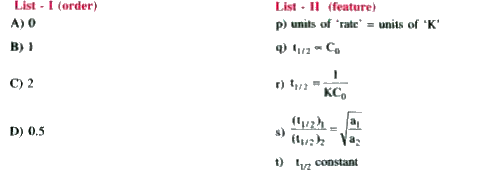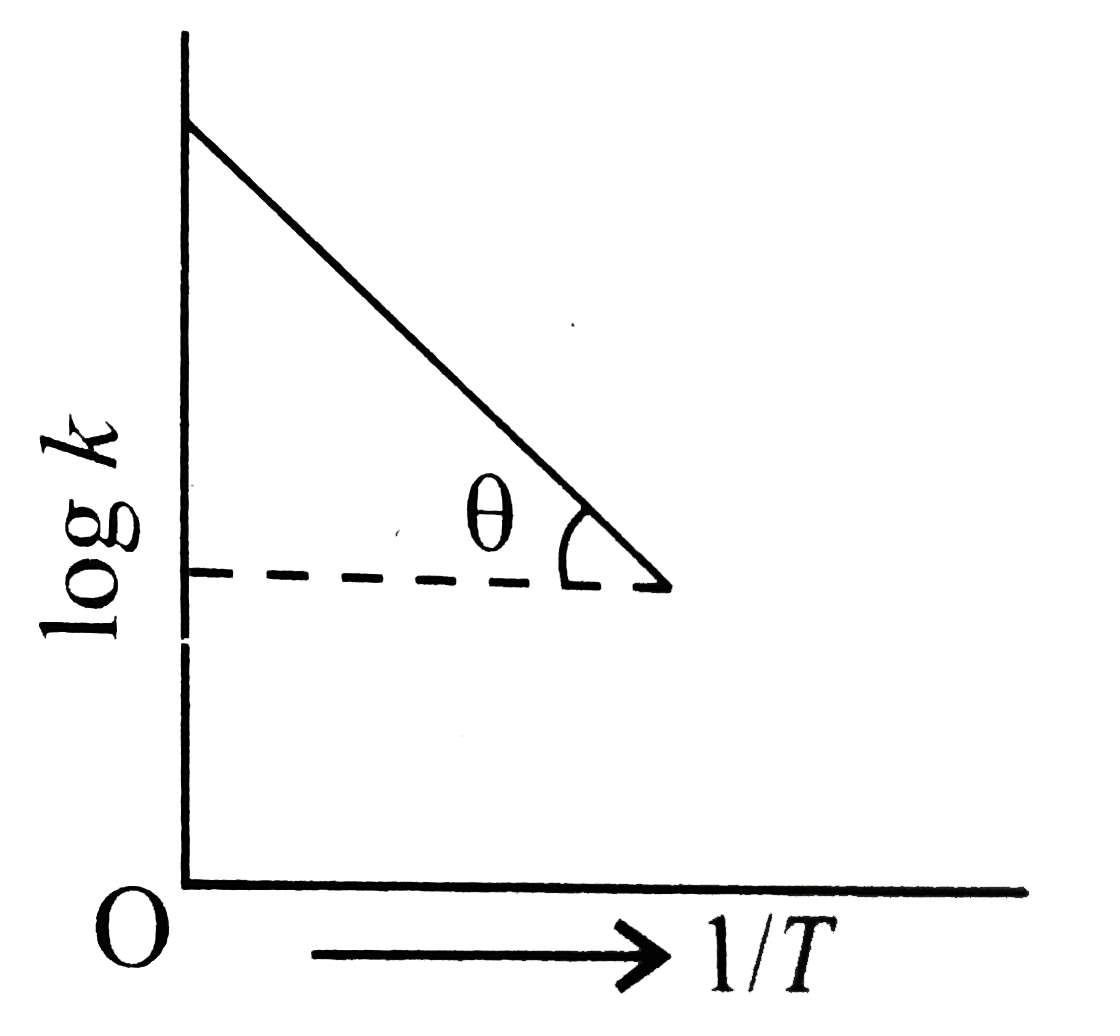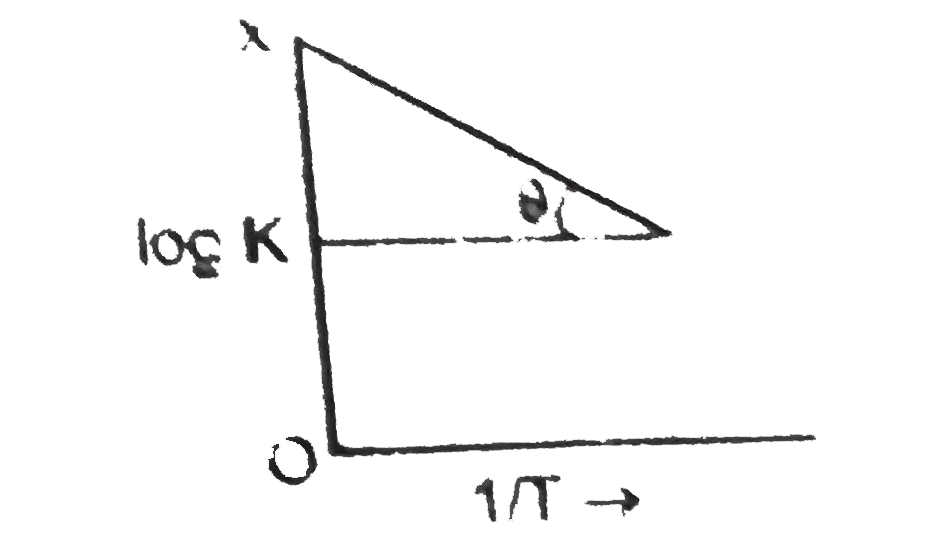Rate constant K varies with temperature by equation log K(min−1)=5−(2000)T.We can conclude that (R=8.314Jmol−1K−1 (or) cal mol−1K−1)Solution in Telugu
Pre exponential factor A is 5
Ea is 4 k cal/mol
Pre exponential factor, A is 105
Ea is 9.212 Kcal/mol
The correct Answer is:C, D
K=A.e−Ea/RT,logK=logA−εa2.303R×1T
logA=5,A=105,Ea2.303RT=2000T,Ea=2000×2.303×21,Ea=9.212KCal
Topper's Solved these Questions
- BOOK - AAKASH SERIESCHAPTER - CHEMICAL KINETICSEXERCISE - LEVEL-II(LECTURE SHEET EXERCISE-II LINKED COMPREHENSION TYPE QUESTIONS)9videos
CHEMICAL KINETICS
- BOOK - AAKASH SERIESCHAPTER - CHEMICAL KINETICSEXERCISE - LEVEL-II(LECTURE SHEET EXERCISE-III MATCH THE FOLLOWING QUESTIONS)3videos
CHEMICAL KINETICS
- BOOK - AAKASH SERIESCHAPTER - CHEMICAL KINETICSEXERCISE - LEVEL-1 (EXERCISE -II ORDER, MOLECULARITY, HALF LIFE:)34videos
CHEMICAL KINETICS
- BOOK - AAKASH SERIESCHAPTER - CHEMICAL KINETCSEXERCISE - EXERCISE - 3.245videos
CHEMICAL KINETCS
- BOOK - AAKASH SERIESCHAPTER - CHEMICAL THERMODYNAMICSEXERCISE - Additional Practice Exercise54videos
CHEMICAL THERMODYNAMICS
Similar Questions
A certain endothermic reaction: A→ Product, ΔH=+ve proceeds ina sequence of three elementary steps with the rate constant K1,K2 and K3 and each one having energy of activation E1,E2 and E3 respectively at 25∘C. The observed rate constannt for the reaction is equal to K3√K1K2.
A1,A2 and A3 are Arrhenius parameters respectively.
The observed energy of activation for the reaction is01:07View SolutionMatch the following columns
 02:20View Solution
02:20View SolutionSucrose decompose in acid solution into glucose and fructose according to the first order rate law, with t12=3.00 hours. What fraction of sample of sucrose remains after 8 hours ?
03:19View SolutionDiscuss on the kinetic spontaneity of a chemical reaction. Is a slow reaction spontaneous? Why?
View SolutionWhich among the following is not an exact differential?
View SolutionThe molar heat capacity of a gas at constant volume is found to be 5calmol−1K−1. Find the ratioγ=CpCv for the gas. The gas constant R=2 cal mol^(-1) K^(-1).
05:10View SolutionRate constant k varies with temperature by equation logk(−1min)=log5−2000kcalRT×2.303. We can conclude that
02:18View SolutionGraph between logk and 1/T [k rate constant (s−1) and T and the temperature (K)] is a straight line with OX=5,θ=tan−1(1/2.303). Hence −Ea will be
 03:19View Solution
03:19View SolutionGraph between log k and 1//T [where K is rate constant in s^(-1) and T is the temperature (in K) is a straight line with Hence, E_(a) will be
01:33View SolutionThe graph between log k and 1/T[K is rate constant (sec−1) and T the temperature (K)] is a straight line with OX=5andθ=tan−1(−12.303).Calculate the value of Ea is cal. ?
 02:26View Solution
02:26View SolutionRate constant k varies with temperature by equation, log k (min+−1)=5−2000T(K) We can conclud:
View SolutionEquilibrium consistant for a reaction is 10. find the value of ΔG0? R=8.314J⋅K−1⋅mol−1,T=300K.
02:03View SolutionGraph between logk and 1/T [k rate constant (s−1) and T and the temperature (K)] is a straight line with OX=5,θ=tan−1(1/2.303). Hence −Ea will be
 01:35View Solution
01:35View SolutionThe molar heat capacity of a gas at constant volume is found to be 5calmol−1K−1. Find the ratioγ=CpCv for the gas. The gas constant R=2 cal mol^(-1) K^(-1).
03:17View SolutionThe units of universal gas constant is
a) Jmol−1K−1
b) Jkg−1k−1
c) Litre atm mol−1k−1
d) cal mol−1k−101:45View Solution

